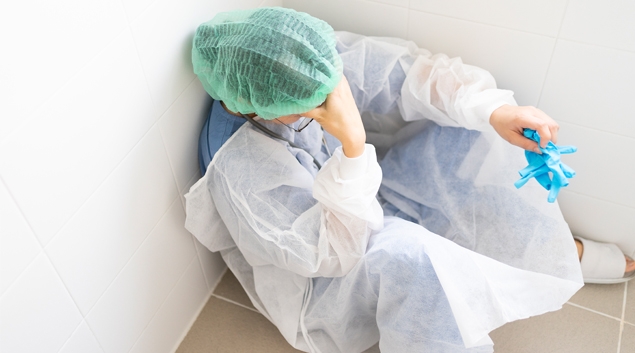
According to a new study from Brown, students who identify as lesbian, gay or bisexual (LGB) are more likely than their heterosexual peers to experience burnout.
Studies have shown that nearly half of all medical students in the U.S. report symptoms of burnout, a long-term reaction to stress characterized by emotional exhaustion, cynicism and feelings of decreased personal accomplishment. Beyond the personal toll, the implications for aspiring and practicing physicians can be severe, from reduced quality of care to increased risk of patient safety incidents.
Conducted in collaboration with researchers from Yale University, the new research is based on data from the 2016 and 2017 AAMC Medical School Graduation Questionnaire, a national survey that includes questions on everything from medical education to financial costs to clinical experiences.
In the survey there are questions about negative experiences (such as mistreatment and burnout) and identity, including sexual orientation. Response options include “heterosexual or straight,” “gay or lesbian” and “bisexual.” The study combined the former into the category of LGB. Information about the gender identity of students who identify as transgender or genderqueer was not provided for analysis.
In the analysis of 26,123 total responses, 17% of LGB medical students reported high levels of burnout, compared to 11.1% of heterosexual students.
WHAT’S THE IMPACT?
Potential causes of burnout include the intensity of medical training, strained finances and unattainable expectations, the authors note in the study. Mistreatment is also a contributing factor, and there has been increased interest in examining its effects on trainees from racial and ethnic groups underrepresented in medicine. However, research had yet to focus specifically on LGB medical students.
LGB students also reported a higher frequency of perceived mistreatment. For example, 27% of LGB students reported being publicly humiliated, compared with 20.7% of heterosexual students. Some 23.3% reported perceived mistreatment specific to their sexual orientation at least once during medical school, compared with 1% of heterosexual students.
Mistreatment didn’t completely explain the emotional strain experienced by LGB medical students, who were 30% more likely to experience burnout, even after adjustments were made for reported experiences of mistreatment.
LGB students reporting frequent experiences of mistreatment related to their sexual orientation had an eight times higher likelihood of burnout compared to heterosexual students. This difference was dramatic when mistreatment occurred more frequently. At lower levels of mistreatment, the differences weren’t as extreme.
According to the authors, there are characteristics of medical training separate from individual experiences of mistreatment that lead to increased burnout among LGB trainees. Previous studies had shown that a high number of LGB medical students report concealing their sexual identity during medical school for fear of discrimination. They also report more depression, anxiety and low self-rated health compared with heterosexual students.
This can have far-reaching consequences, as the wellbeing of the healthcare workforce is strongly linked to the kind of care that providers are able to offer patients.
THE LARGER TREND
Physicians across the board are feeling burnt out, with a recent Medscape survey finding that although burnout rates were stable from the previous year, at 42% overall, the level in women increased from 48% to 51% during the pandemic, while burnout in male physicians overall remained unchanged from 2019.
Burnout and the stress of the pandemic – including factors such as personal risk, social distancing and financial uncertainty – appeared to diminish physicians’ overall work life happiness, with only 49% reporting they were happy in 2020 versus 69% pre-pandemic. More than one-third (34%) reported feeling unhappy last year, compared with 19% in 2019.
Nearly 80% of physicians said they felt burned out prior to the pandemic, but one in five said their burnout emerged only last year. Critical care (51%), rheumatology (50%) and infectious disease specialists (49%) ranked among the highest in reporting burnout for the first time since Medscape began surveying on the issue in 2013.
Twitter: @JELagasse
Email the writer: jeff.lagasse@himssmedia.com

